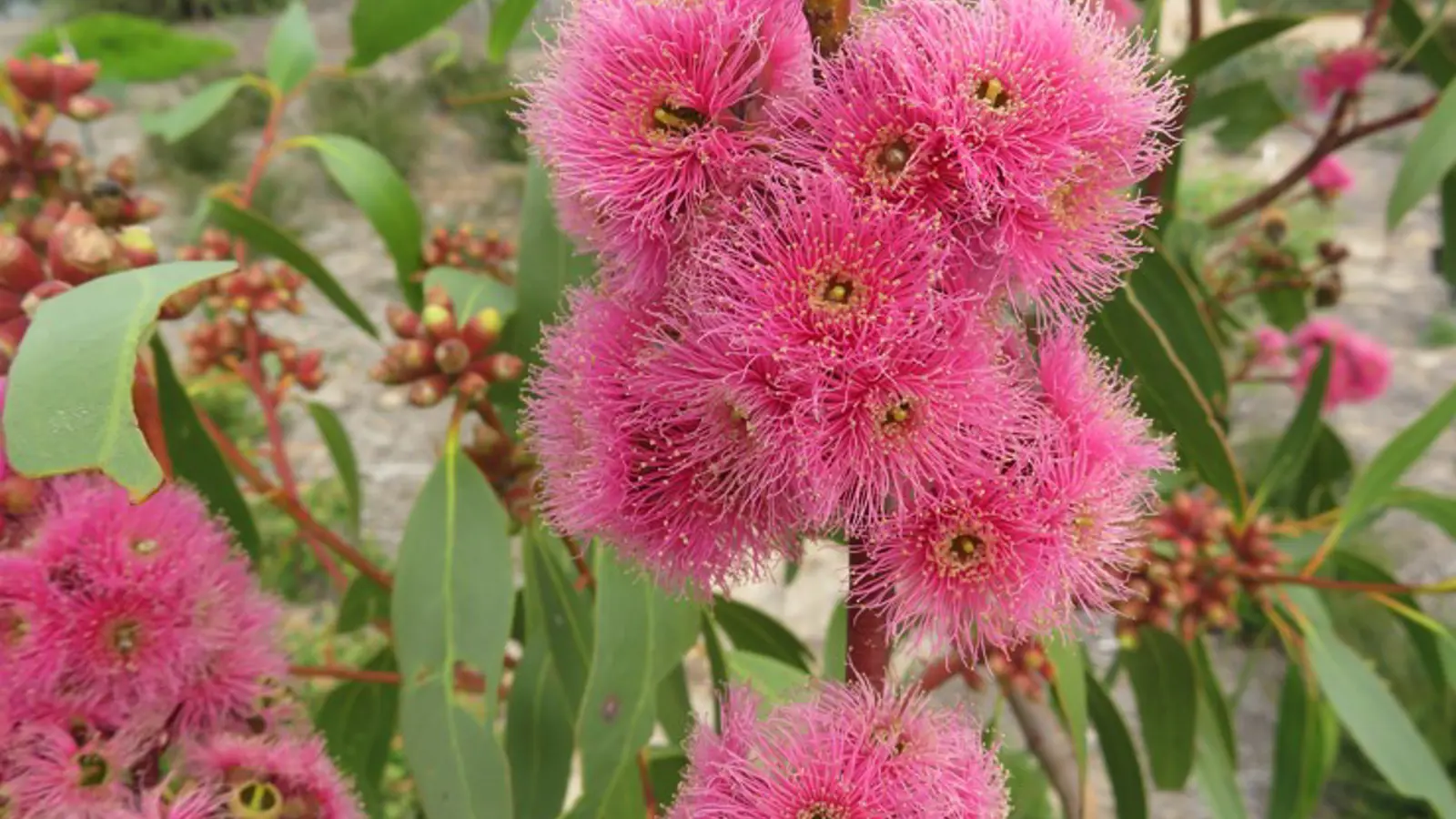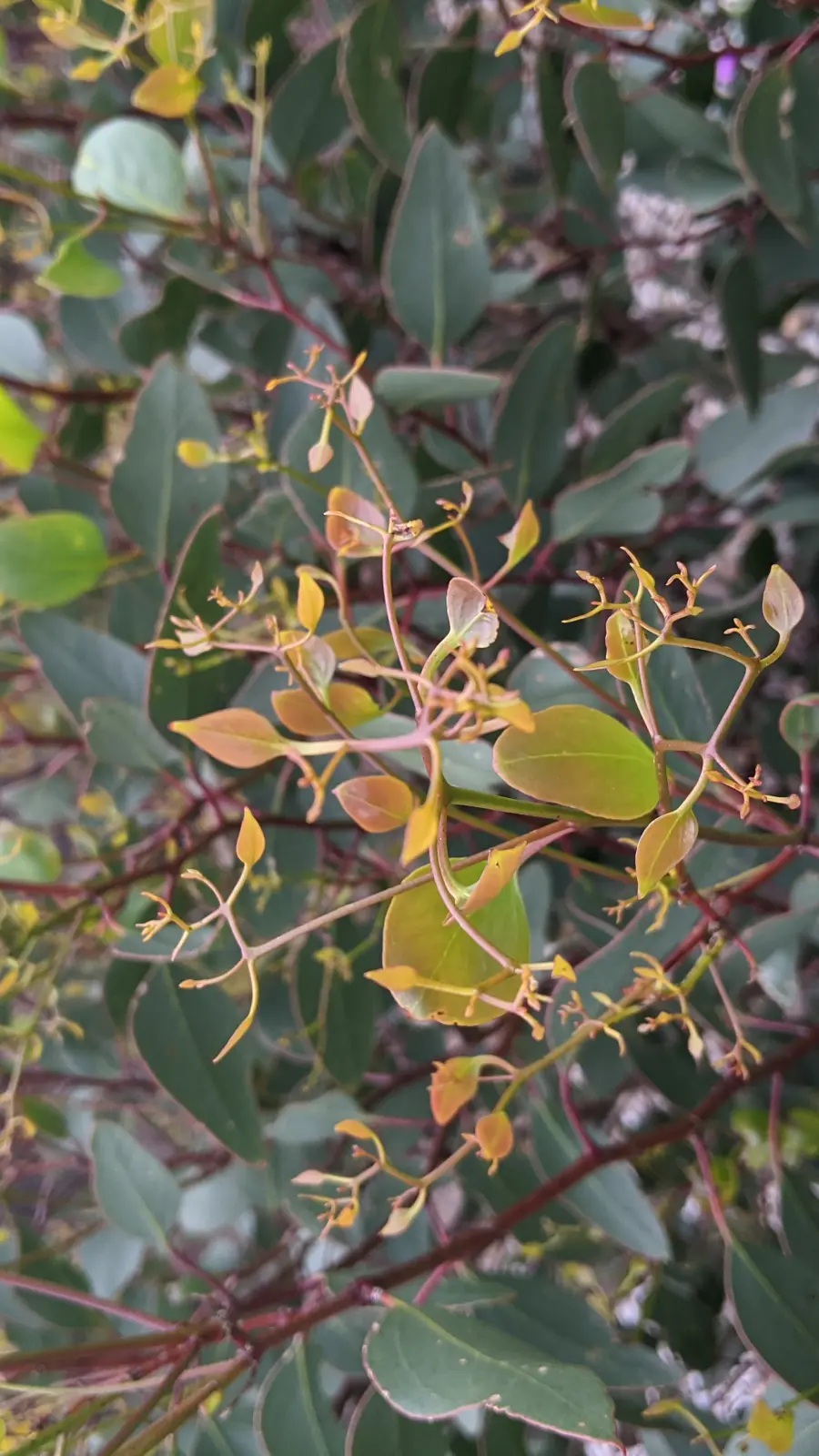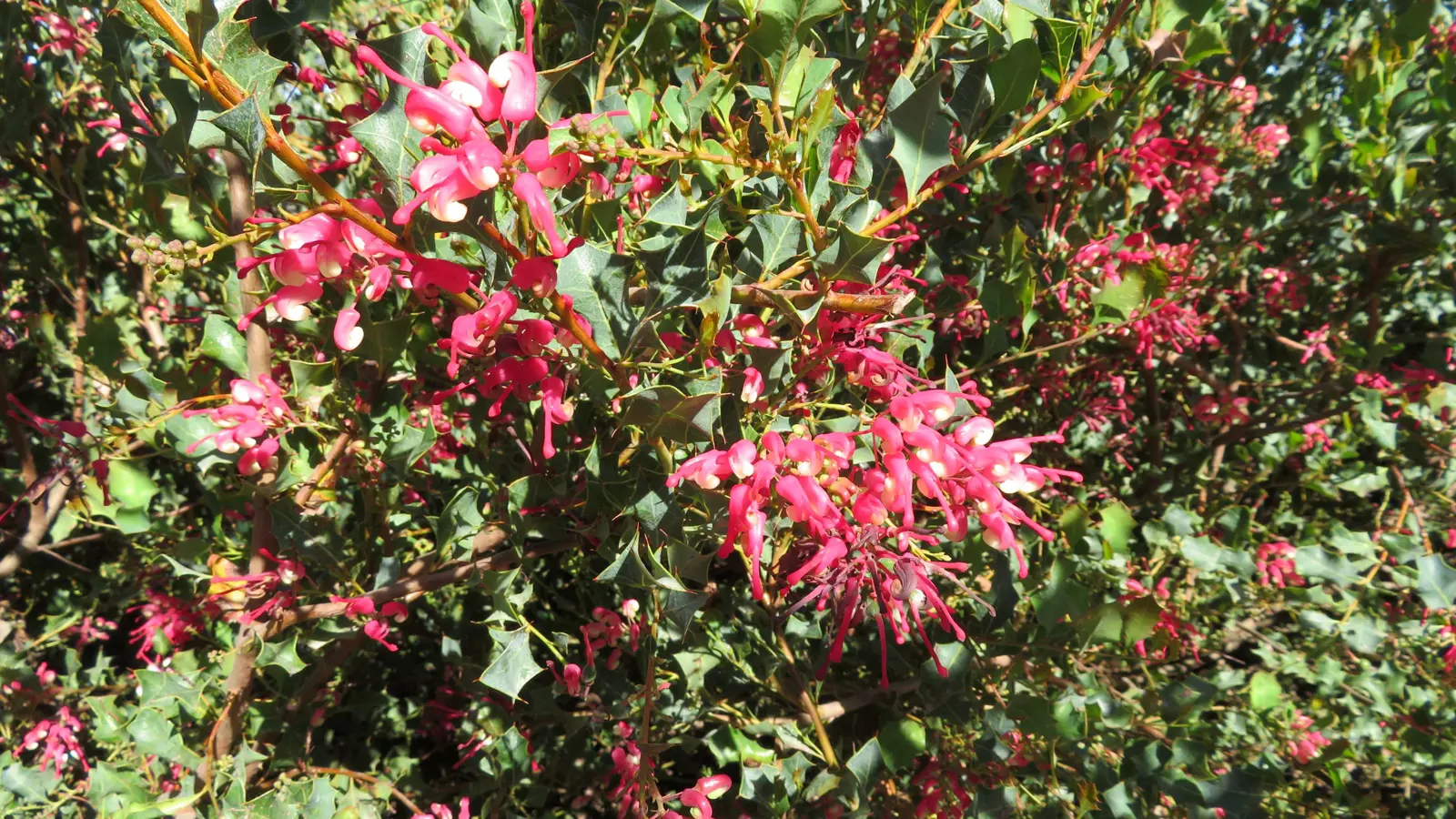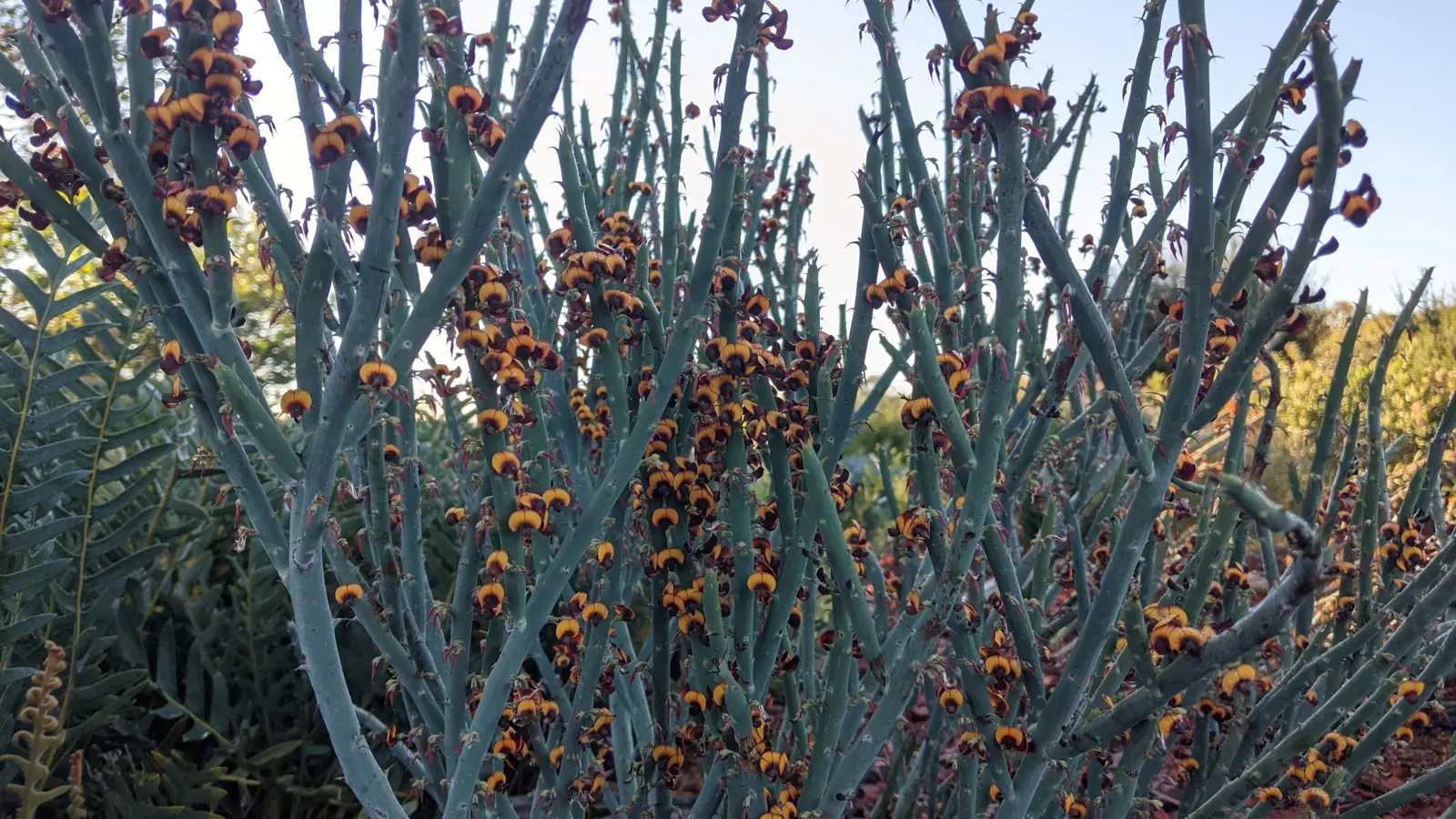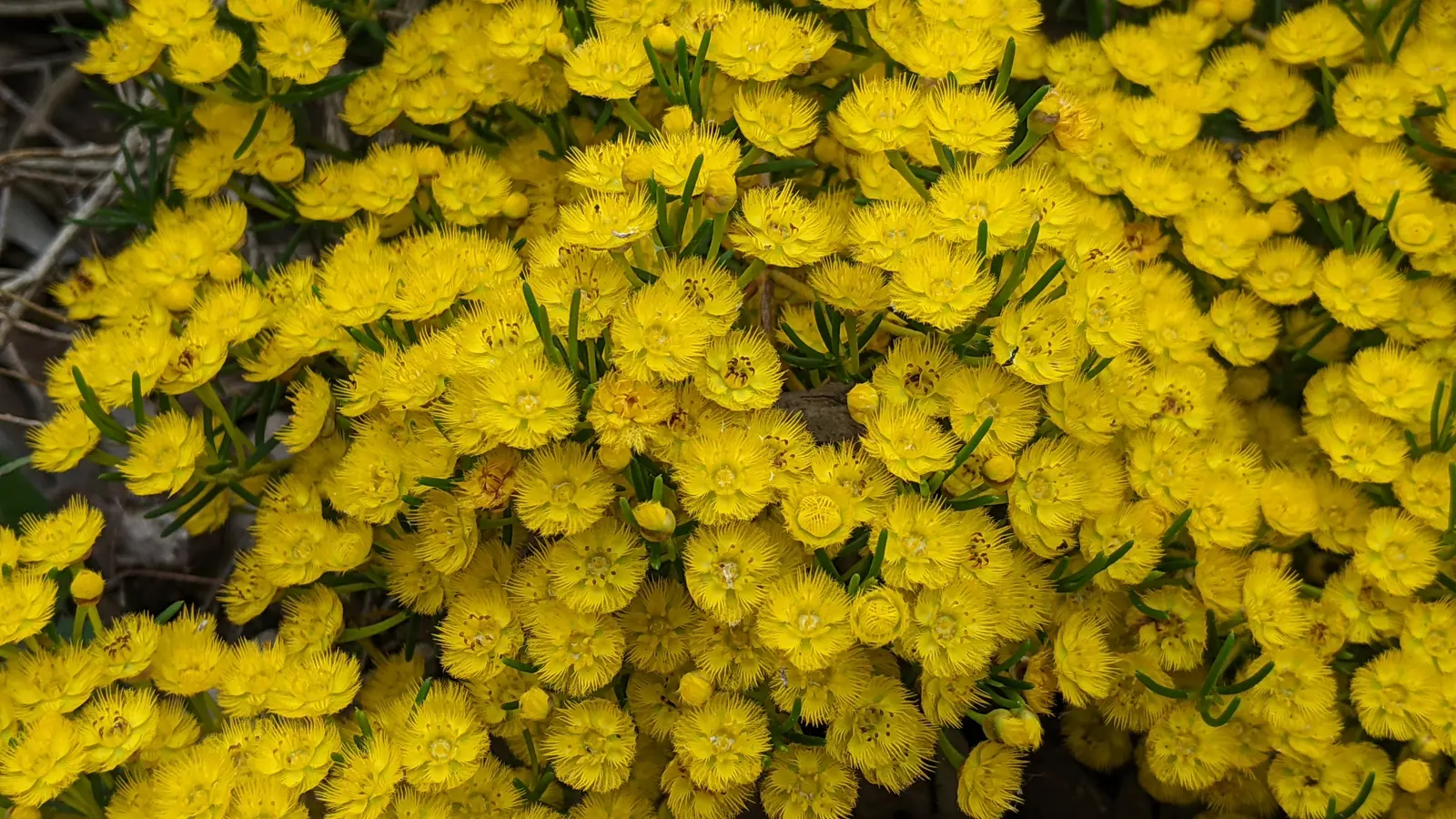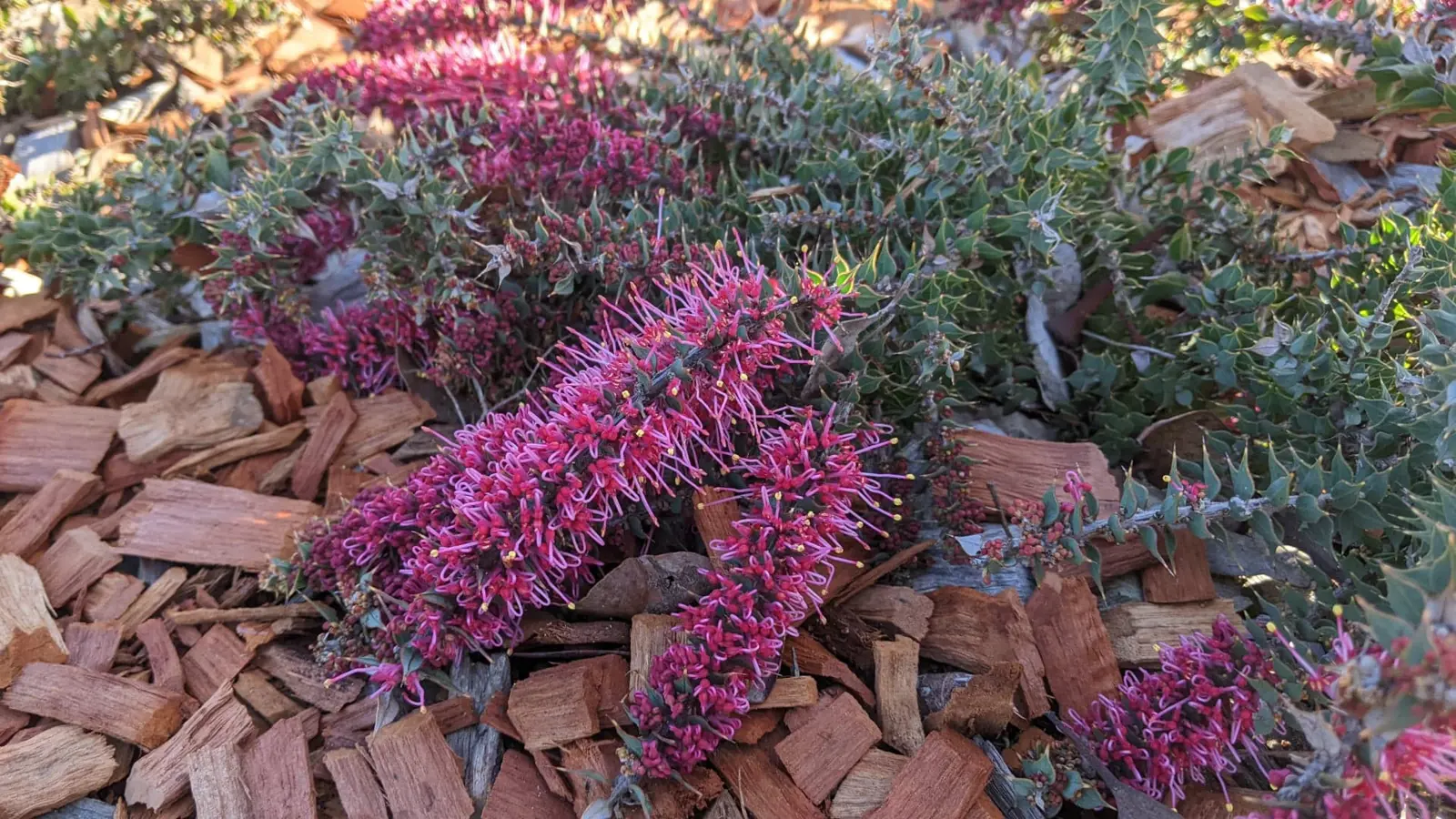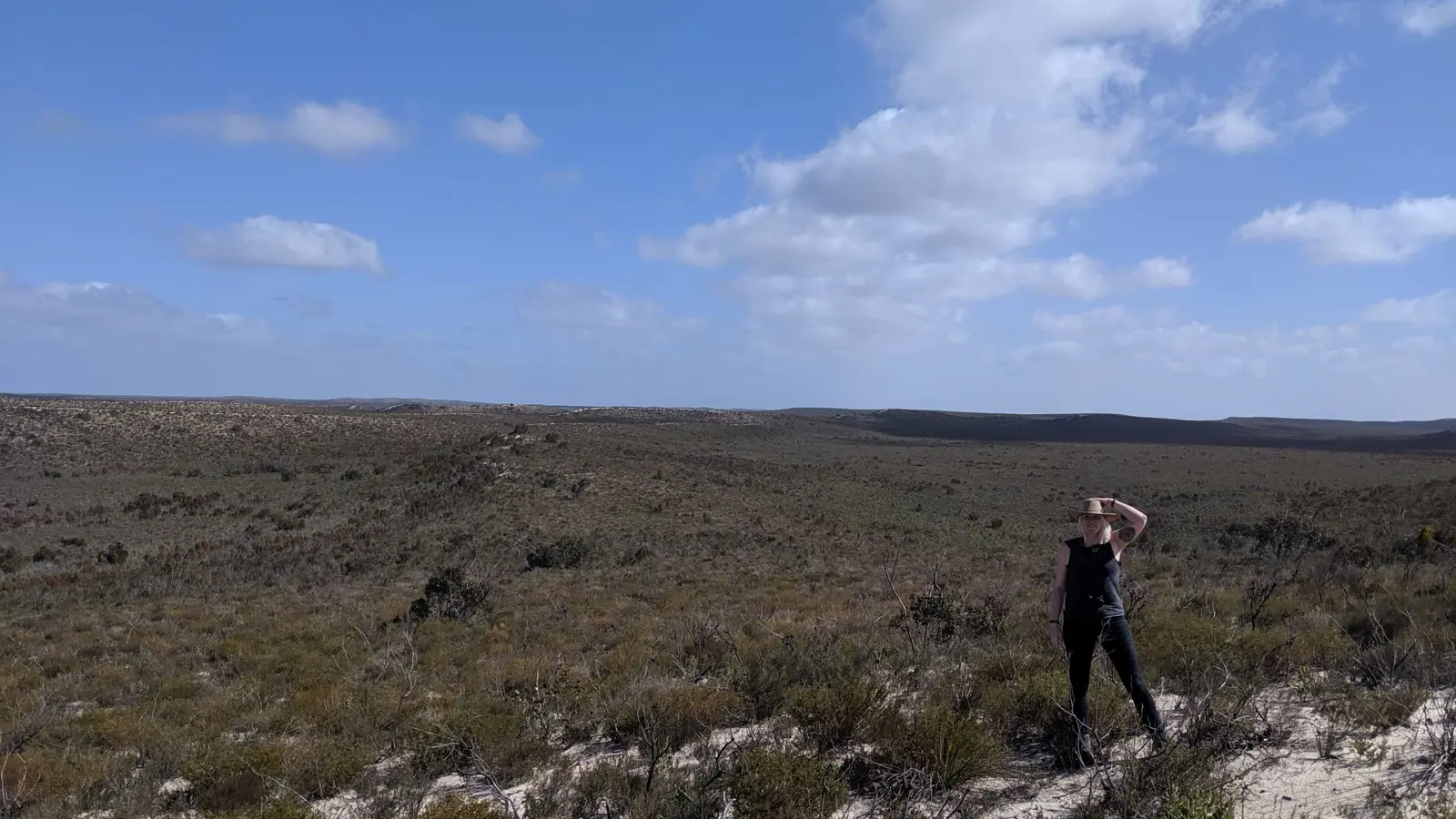
Howson Hill
Howson Hill
Howson Hill was designed around existing vegetation of early garden plantings, including the dominant Eucalyptus lehmannii in the centre of the hill. Representing the various mallee bio-regions found across southern Australia, this collection is predominantly small multi-branched eucalypts surrounded by low-growing, heathy shrubs. The unique habits and adaptations of these species give them an advantage to survive in semi-arid climates and nutrient-deficient soils of mallee country.
- The word ‘Mallee’ is derived from the Aboriginal word mali meaning water. The oversized lignotuberous roots of mallee trees contain water that allows them to regenerate quickly after fire and survive long droughts.
- Due to European settlement and agriculture practices, only 15% of original mallee vegetation remains across the mallee landscapes found in southern Australia (WA, SA, Vic).
- Howson Hill was named in honour of the Hon. Peter Howson CMG (1919 - 2009), the first Federal Minister for the Environment and Indigenous Affairs, as well as a long-standing member of the Maud Gibson Trust.
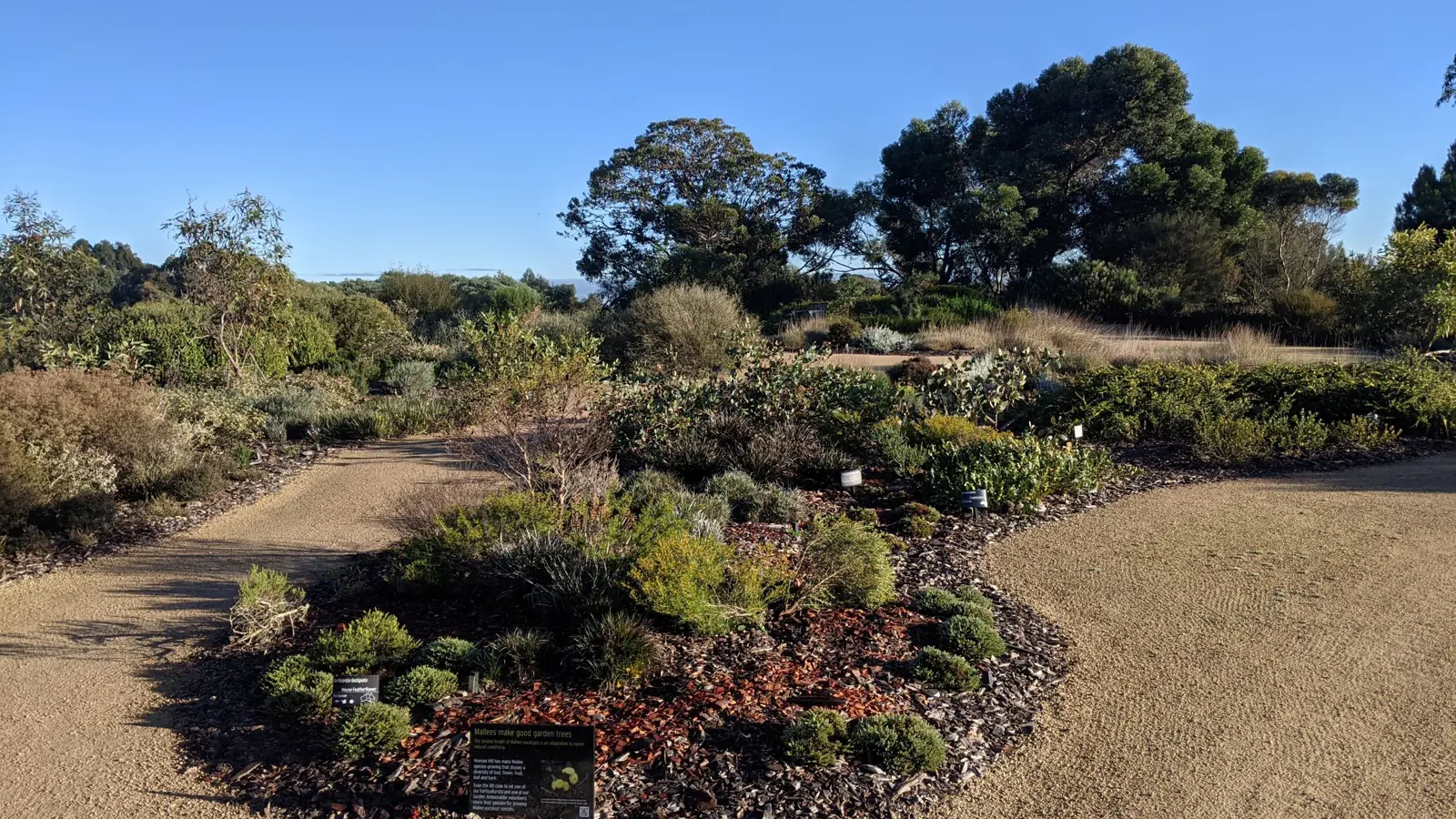
Notes from the Curator
Marie Velthoven
As the pathway lined by Eucalyptus petiolaris opens up to Howson Hill, you may find the landscape here feels open and exposed – a stark change to the large trees and dense forest shrubs found elsewhere in the gardens, yet true to the vast flat horizons of mallee country. This garden primarily displays plants from one of the world’s biodiversity hotspots, southern Western Australia. However, also included on either side of the gravel path are collections representing South Australian and Victorian mallee regions. Here you will see many juvenile plantings of rare and threatened species collected by the horticulture team on field trips to the Big Desert and Little Desert.

